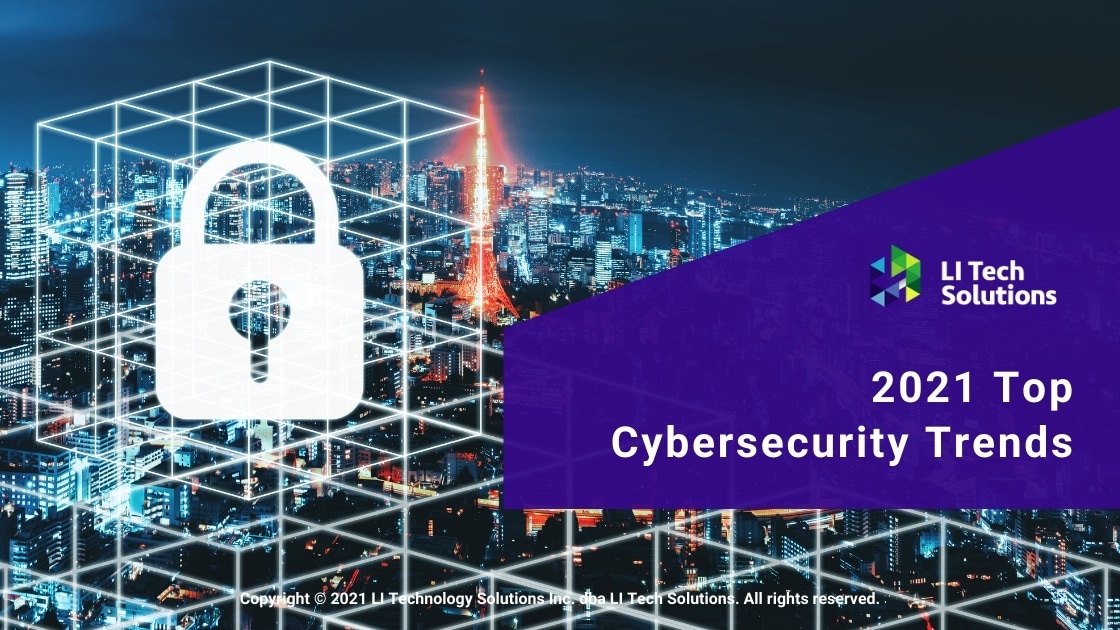Cybersecurity trends are continually evolving and growing within the powerful frameworks of information technology, the cloud, and network technologies. In the last few years, rules and procedures have been rewritten to modernize business.
Companies of every size must realize cyber threats are legitimate and will continue to be part of our everyday lives for years to come.
- SolarWinds
- Cybersecurity in 2021 and Beyond
- Final Word
There are no magic bullets to achievement in business. Owners must now change the way they process their cyber activities to remain ahead of the curve. There has been a flurry of new threats and technologies that have attacked the new stay-at-home mobile workforce.
The remote workforce model has no network boundary, and more applications are written for the cloud than ever. These new network devices, and in most part, poorly written code, give attackers the green light into your business.
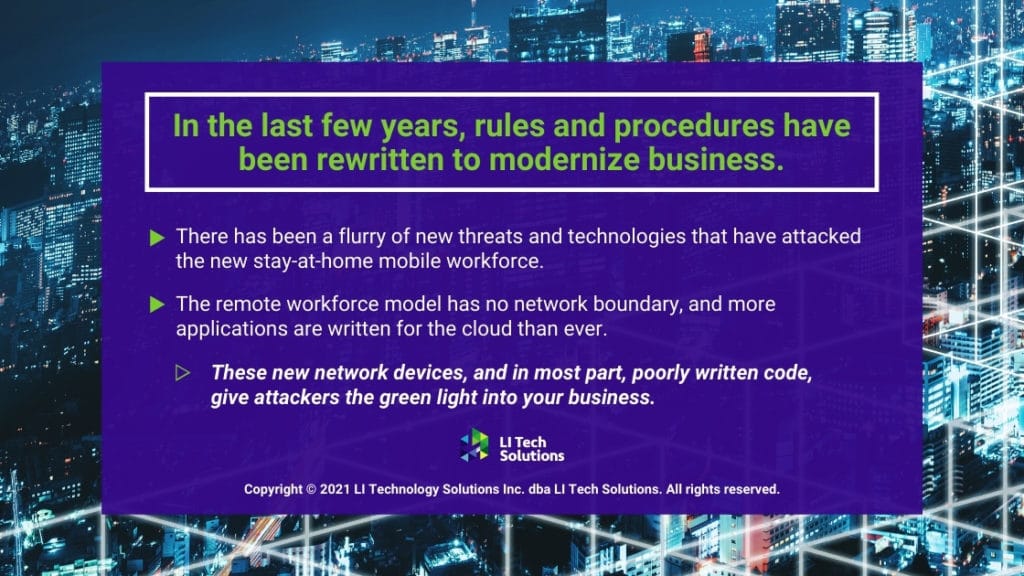
Three Cybersecurity solutions help remote workers control their network.
The world has shifted, and hackers have found lucrative new areas of access to a companies’ network. In response to a lack of network borders, the adoption of new cyber protection technologies has accelerated.
- SASE (Secure Access Service Edge) is a real-time context policy for a continuous assessment of risk. SASE is a cloud-delivered service based on WAN and network security policies.
SASE policies can benefit a corporation in several respects, such as flexibility with a cloud infrastructure, reduced complexity, and cost savings.
- Zero Trust has been in the lexicon of technology since 2010 when the phrase was first introduced. A few years later, Google implemented a Zero Trust Policy for their network. Zero Trust is an approach that organizations should not automatically trust any device or human access inside or outside their network.
- XDR (Extended Detection and Response) is in the early stages of development by several elite vendors. XDR uses machine learning techniques to house multiple security mechanisms. Risk managers are continually overrun with security alerts; XDR helps to eradicate these daily pressures.
XDR helps companies improve threat detection and response by centralizing their activity and reducing false positives.
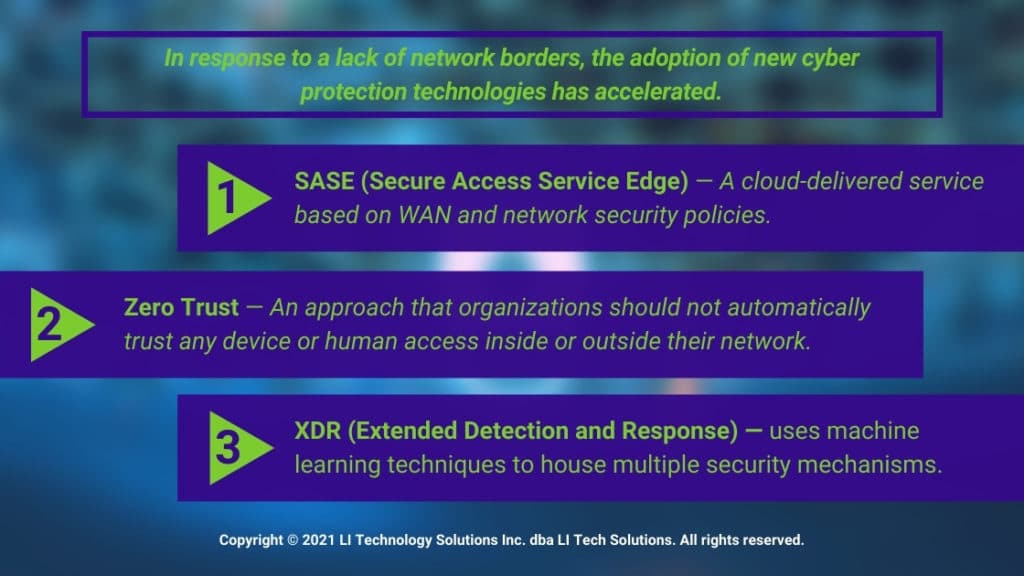
SolarWinds
Washington DC’s worst cybersecurity hack, SolarWinds Orion, has company executives around the world-shaking in their loafers. Cyber experts believe there are simply not enough skilled workers to track down all the destruction done to business and government networks.
Politico: From the President of Microsoft, SolarWinds Orion hack was the most powerful and sophisticated cyber-attack ever!!!.
Bruce Schneier, a cyber expert and Harvard fellow states, “We have a serious problem. We don’t know what networks they are in, how deep they are, what access they have, what tools they left.” The only way to know these infected networks are clean, “to burn it down to the ground and rebuild it.”
Three cybersecurity trends have emerged since the SolarWinds attack.
- Microsoft was one of the prime recipients of the mayhem created by SolarWinds. According to authorities, hackers capitalized on the limitations in the authentication architecture of the software giant and its protocols. Microsoft has since rebuilt the vulnerabilities and taken issue with the government’s insistence that more could have been done.
- Cyber Insurance premiums have surged 29% since 2020. Policies for cyber attacks have been around for a lot longer than most people realize. In 1997, AIG wrote the first cyber insurance policy. With cyber-crime increasing dramatically since SolarWinds, premiums for cyber insurance have risen approximately 11% annually with no signs of slowing.
- The cloud, with advanced services and advantages for remote work, has skyrocketed the targets for attackers. After SolarWinds, assaults on cloud applications have increased and look to extend their torrid pace well past 2021. Misconfigured cloud settings were a significant cause of breaches in 2020 at an average cost of over $4 million to the enterprise.
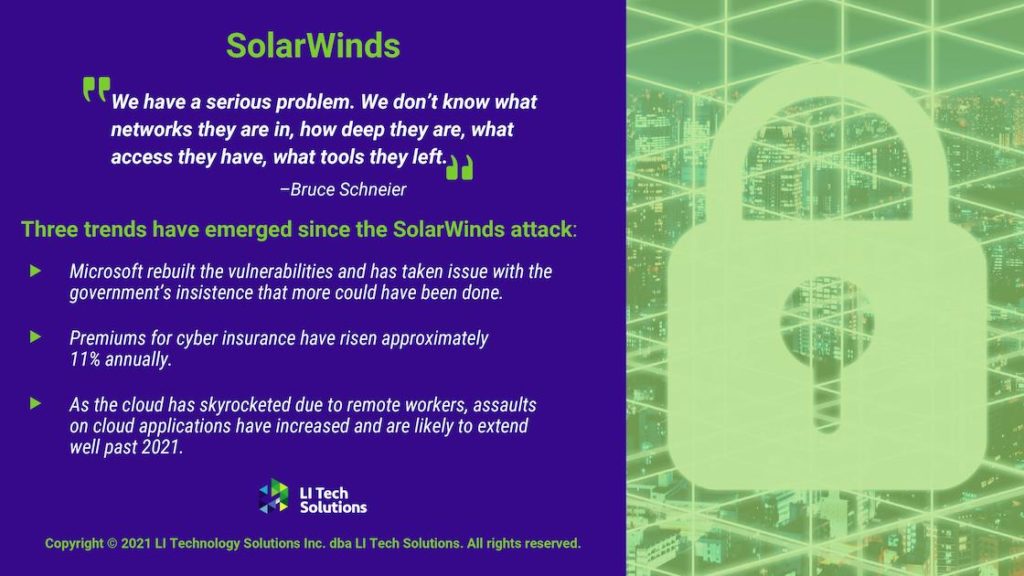
Cybersecurity in 2021 and Beyond
Every company is now being urged to be proactive in its approach to cybersecurity and the myriad of cyber threats that are coming. Organizations must come to terms with the fact that security is no longer an optional expense but a budget line item.
- Companies must prioritize a cybersecurity workforce. 56% of organizations report a scarcity of personnel for 2021.
- Data continues to multiply every day. Businesses must automate their security processes whenever feasible. In 2020, IBM found close to a 4 million dollar discrepancy in the cost of a data breach from automated companies instead of those that were not.
Machine learning and AI technologies continue their meteoric rise in complexity and usefulness. These technologies are being developed as part of the enterprise infrastructure for automated security and replacing human intervention.
AI goes both ways in cybersecurity trends. Criminals take advantage of AI and machine learning techniques. Cybercriminals are automating their attacks using data poisoning and model stealing.
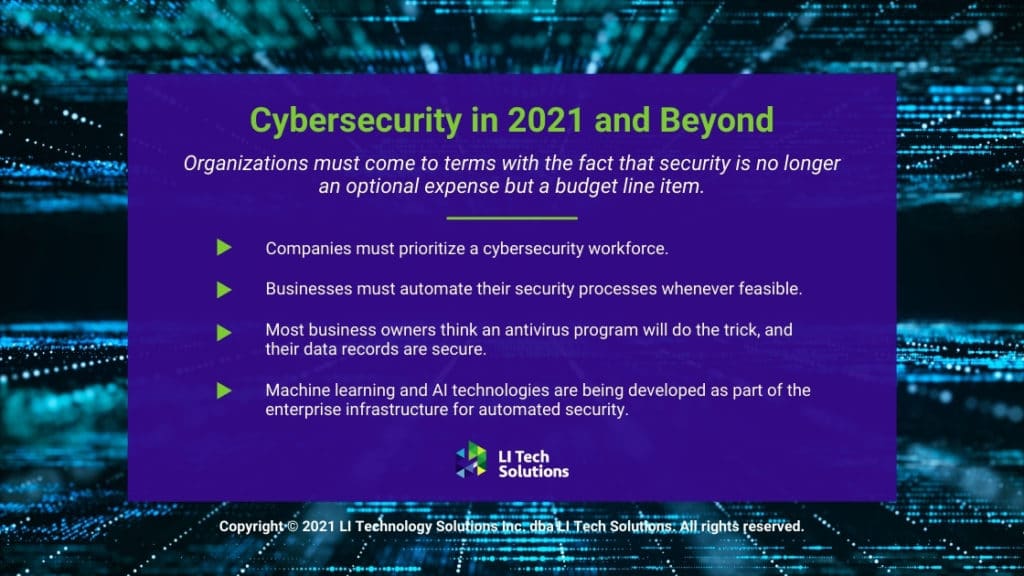
Final Word on Cybersecurity Trends
Decades ago and still today, business success requires a lot of open-to-close hours, sweat equity, and plenty of sacrifice. In this digital age, most business owners think an antivirus program would do the trick, and their data records were secure.
Cybersecurity should now be one of the initial steps taken to prepare your organization for success. A healthy distrust for cyber-attackers goes a long way toward keeping company data, intellectual property, and digital assets safe from these criminals.

